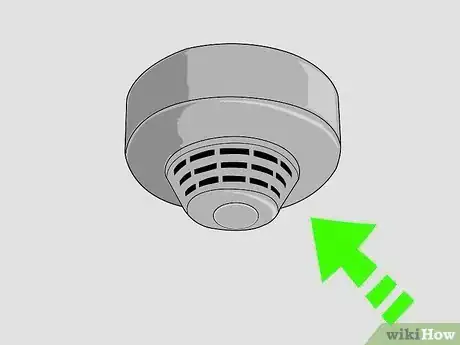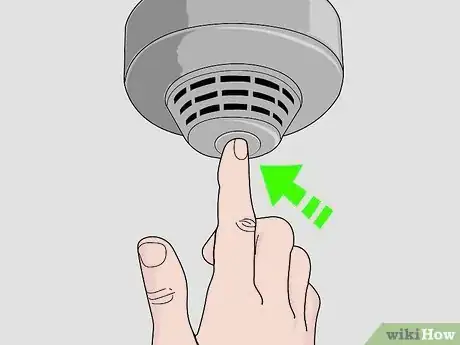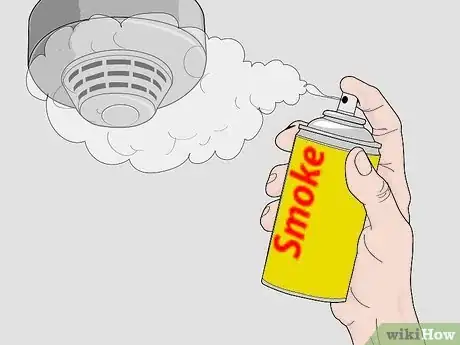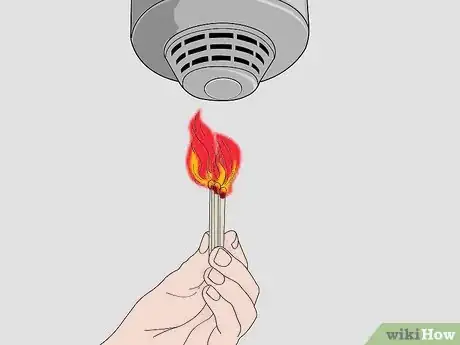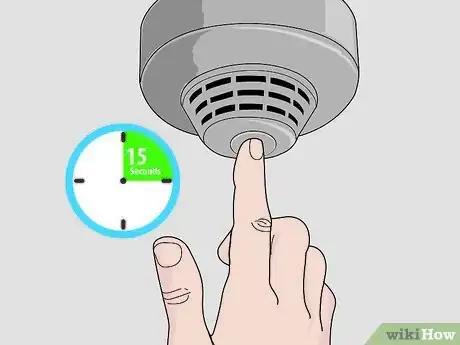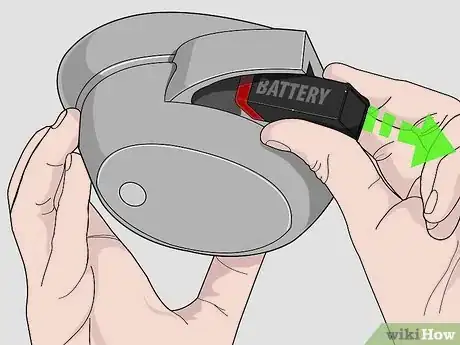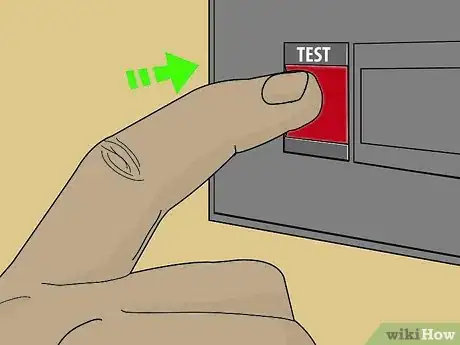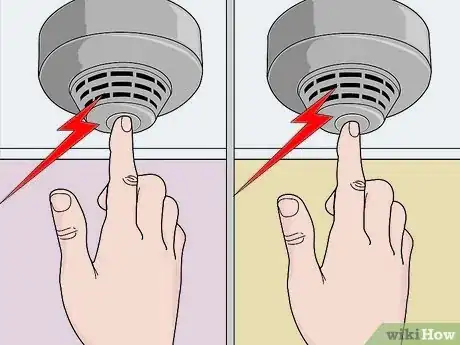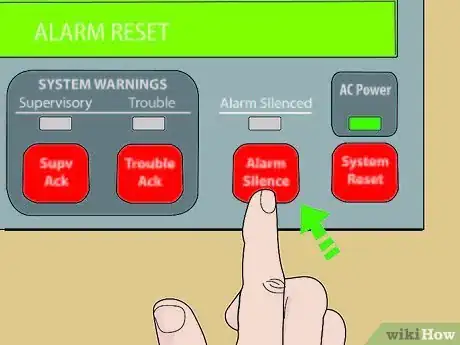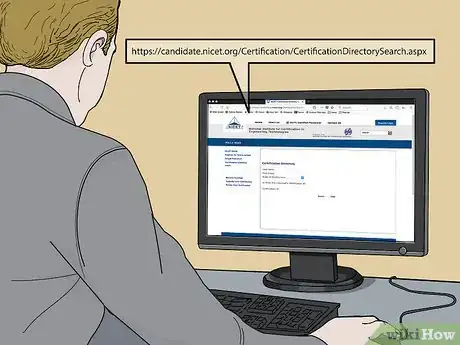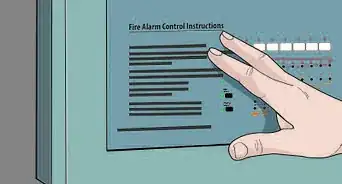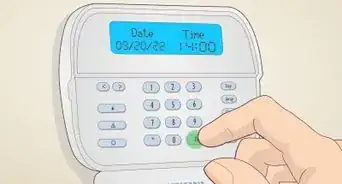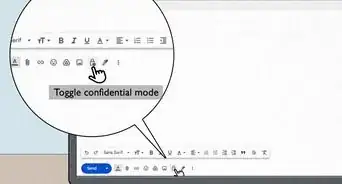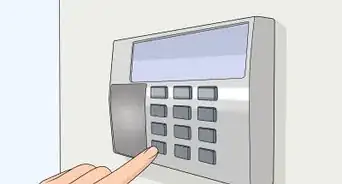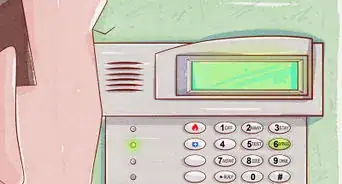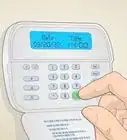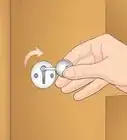This article was co-authored by wikiHow Staff. Our trained team of editors and researchers validate articles for accuracy and comprehensiveness. wikiHow's Content Management Team carefully monitors the work from our editorial staff to ensure that each article is backed by trusted research and meets our high quality standards.
There are 9 references cited in this article, which can be found at the bottom of the page.
This article has been viewed 48,953 times.
Learn more...
Fire alarms are essential safety devices that, when activated, will alert you of danger and quite possibly save your life. Testing your system regularly ensures that the detectors and alarms are working properly and will operate as intended during dangerous situations.
Steps
Testing a Smoke Detector
-
1Locate your smoke detector. In most houses, you’ll find smoke detectors on the ceiling or high up on the wall. Most models look like small, white discs with a single LED light on the top or side. Most alarms require you to jump up and down before you press the test button. If they were properly installed, you should not find any detectors near doors, windows, or air ducts.[1]
-
2Check the power by pressing the test button. For some alarms, this may be as simple pressing and holding a button on the hood of the device. For others, you may need to unscrew the device from the wall or ceiling and press a button on the back of the device. If the alarm goes off, the device has enough power. If it does not, you may need to change the device’s batteries or, for hardwired detectors, replace the wires connecting it to the wall.[2]
- Before finishing your test, walk away from the alarm to see how loud it is. If you cannot hear the alarm in the next room over, it may not be loud enough to keep you safe.
- For modern devices, testing the power will also test the particle and smoke sensors, making further tests unnecessary.
Advertisement -
3Spray aerosol to check the particle sensor. Go to a home improvement or hardware store and purchase a can of spray aerosol labeled as ‘Smoke Test’ or something similar. Following the instructions listed on the can, spray the aerosol close enough to the smoke detector that it can pick up the particles. If the alarm does not go off, your detector’s particle sensor may be out of commission.[3]
- When the test is finished, use a handheld vacuum to suck remaining aerosol particles out of the air near the detector. Then, if it is still dirty, clean the device with a soft cloth or brush.
-
4Light matches to check the smoke sensor. Hold 2 or 3 matches in your hand and, while you’re below the smoke detector, strike them. Blow them out immediately and let the smoke rise to the detector. The smoke should trigger the device’s smoke detector and set off the alarm. If it does not activate, your detector is not operating correctly.
- Be careful when handling matches to avoid burning your hands.
- After the test, suck up the smoke with a handheld vacuum. If the detector is dirty, clean it with a brush or soft cloth.
-
5Reset your alarm after each test. Once each inspection is complete, you can turn off the alarm by holding down the Test button for around 15 seconds. This will reset the device and allow you to proceed with the other tests.[4]
-
6Remove and replace the alarm’s power supply if it won’t turn off. For battery-powered detectors, simply remove and reinsert the battery pack. For hardwired detectors, disconnect the detector from the wall and remove any backup batteries. Then, reinsert the batteries and reconnect the device. If the alarm sounds off immediately after reconnecting the power, your device may be malfunctioning.[5]
- If you’re trying to reset multiple hardwired alarms, try simplifying the process by flipping the circuit breakers connected to each alarm.
Testing a Commercial Fire Alarm System
-
1Notify your fire department if necessary. Many commercial fire alarm systems are directly connected to your local fire department, meaning that as soon as the alarm goes off, it sends out an emergency distress signal. If your system is like this, call your fire department’s non-emergency hotline and tell them when your test will take place.[6]
- For some alarm systems, you can set your control panel to a Test mode, meaning it will not call the fire department. Check your alarm’s instruction manual for information on how to do this.
-
2Activate your fire alarms. For some fire alarm systems, you may be able to activate the alarms directly from the control panel. To do so, press a button labeled 'test' or 'drill' or follow the instructions detailed in your user manual. For other systems, you may need to activate the alarms manually, typically by opening an alarm lever box with a master key and pressing the button located there.[7]
-
3Examine all your fire protection equipment. While the test is active, walk around the building and check each alarm, fire door, elevator, and emergency light.
- In addition to the alarm simply turning on, make sure the sounds coming out of the device are loud (at least 15 dB louder than ambient noise) and any strobe lights located on the device are active.[8]
- Any and all fire doors must self-close to allow for safe isolation of smoke. If the fire door does not close properly, then you will need to have it serviced. There may be an obstruction or broken mechanism keeping the door open. The majority of fire-related injuries and deaths are caused by smoke inhalation, and a non-functioning fire door can pose a danger to occupants evacuating.
- All elevators in service should recall to the ground or sky lobby floor automatically and enter fire service. This will allow firefighters to use the lifts to quickly ascend or descend to the level of the fire to allow for firefighting and rescue operations. The firefighter hat should also illuminate in the event that an alarm is triggered in the hoistway, machine room, or outside one of the landing doors. This can be reset later by turning the fire service switch from "off" to "bypass" or "reset" and then back to "off".
- Security doors must unlock from the inside to allow for a quick evacuation of the facility.
- Emergency lighting and exit signage must illuminate to allow for visibility even in the event of thick, dark smoke or a power cut.
-
4Record your results. While checking your fire alarm system, keep a list of every individual activating device and how it reacted to the test. If one or more components are faulty, this information will help a technician locate the problem quickly. This is particularly important for large institutions with dozens of different alarms.[9]
- Some modern alarms can connect directly to your phone, creating reports automatically. However, you should still check the alarms in person to make sure the reports are accurate.
-
5Reset your alarm system. To reset your fire alarm system, go to your central control panel. For most commercial systems, you can reset the alarms by selecting activated zones and pressing a button labeled ‘reset’ or ‘silence.’ For older or more complex systems, consult your user manual for shut-off information.[10]
-
6Inspect your detectors regularly to adhere to NFPA 72 regulations. In addition to performing alarm system checks, it’s important to have your smoke detectors, heat detectors, sound systems, strobes, and sprinklers checked and tested by a NFPA or NICET certified Fire Alarm inspector. You should have sprinkler systems examined twice a year and all other devices inspected annually.[11]
- If you do not have a fire alarm technician on staff, search online for a local engineer or technician that specializes in fire alarms.
- NICET allows you to search local engineers by name to see if they are certified.
Community Q&A
-
QuestionCan I get a free fire alarm system from a fire station?
 Community AnswerIt depends what state or country you're in as to whether your local fire department gives them out. In most places you'll either need to buy your own or have access to a government-sponsored concession program. You may live where the fire department will come out to fit it or check it's properly fitted, if they have spare time. Call to find out.
Community AnswerIt depends what state or country you're in as to whether your local fire department gives them out. In most places you'll either need to buy your own or have access to a government-sponsored concession program. You may live where the fire department will come out to fit it or check it's properly fitted, if they have spare time. Call to find out. -
QuestionDo simplex pull stations have a test mode?
 Upnorth HereTop AnswererIn theory, simplex pull stations can be "tested" by putting the alarm system in "test mode" to prevent signalling the emergency response and pulling the handle to activate that pull station. Some places do this by rotating which pull station gets tested during routine fire drills.
Upnorth HereTop AnswererIn theory, simplex pull stations can be "tested" by putting the alarm system in "test mode" to prevent signalling the emergency response and pulling the handle to activate that pull station. Some places do this by rotating which pull station gets tested during routine fire drills. -
QuestionWhat frequency of testing is required in residential flats?
 Upnorth HereTop AnswererThere is no international standard for that. Also, there may be flats with both an alarm system and individual alarms within each unit. Alarm systems are not always required (e.g., under NFPA 101: under 4 stories high or less than 11 units). Self-contained smoke alarms in residences should be tested according to the manufacturers' recommendations -- typically once per month. Commercial alarms may need additional annual inspection, testing and maintenance. Local rules may differ.
Upnorth HereTop AnswererThere is no international standard for that. Also, there may be flats with both an alarm system and individual alarms within each unit. Alarm systems are not always required (e.g., under NFPA 101: under 4 stories high or less than 11 units). Self-contained smoke alarms in residences should be tested according to the manufacturers' recommendations -- typically once per month. Commercial alarms may need additional annual inspection, testing and maintenance. Local rules may differ.
References
- ↑ http://www.nfpa.org/Public-Education/By-topic/Smoke-alarms/Installing-and-maintaining-smoke-alarms
- ↑ http://www.nfpa.org/public-education/by-topic/smoke-alarms/safety-messages-about-smoke-alarms
- ↑ http://nvlpubs.nist.gov/nistpubs/jres/85/jresv85n3p223_A1b.pdf
- ↑ https://www.consumerreports.org/smoke-alarms/how-to-reset-a-smoke-alarm-that-wont-stop/
- ↑ https://www.consumerreports.org/smoke-alarms/how-to-reset-a-smoke-alarm-that-wont-stop/
- ↑ https://www.youtube.com/watch?v=hZzFkqlPoxg&feature=youtu.be&t=47s
- ↑ https://facilities.birdvilleschools.net/hc/en-us/articles/220318327-Fire-Drill-and-Reset-Procedures-for-District-Fire-Alarm-Systems
- ↑ https://www.nfpa.org/Assets/files/AboutTheCodes/72/72-13ROPDraft.pdf
- ↑ http://www.facilitiesnet.com/firesafety/article/Fire-Safety-Keys-to-Successful-Inspection-and-Testing-Procedures-Facility-Management-Fire-SafetyProtection-Feature--11443
About This Article
To see if a smoke detector has enough power, press and hold the test button located on the front or back of the device. You can test the particle detector by spraying a can of Smoke Test aerosol near the alarm. To check if the smoke detector works, ignite 2 or 3 matches below the device and blow them out immediately, letting the smoke rise to the detector. If the alarm does not activate after any of these tests, your device may not be operating correctly. For tips on testing a commercial fire alarm system, read on!
